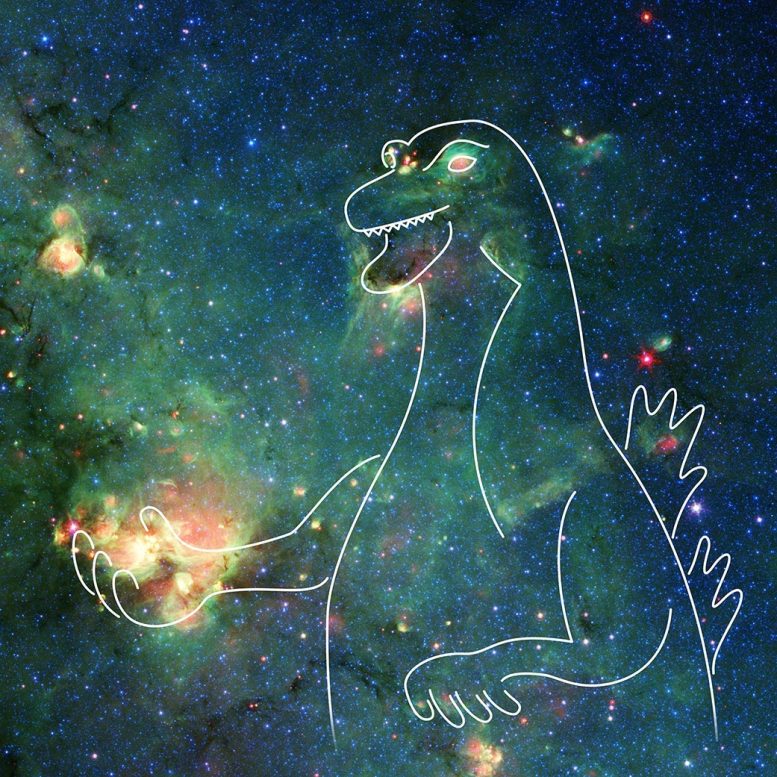NASA’s Spitzer Space Telescope imaged this cloud of gas and dust. The colors represent different wavelengths of infrared light and can reveal such features as places where radiation from stars had heated the surrounding material. Any resemblance to Godzilla is purely imaginary. Credit: NASA/JPL-Caltech
Just like clouds on Earth, clouds of gas and dust in space can sometimes resemble familiar objects, or even popular movie creatures.
Do you see a monster in this picture? Do the bright spots near the top of the image look like the piercing eyes and elongated snout of Godzilla?
In reality, this colorful image shows a nebula – a cloud of gas and dust in space – captured by
This is the same image above, with an outline of Godzilla drawn in. Credit: NASA/JPL-Caltech
This image was processed by Caltech astronomer Robert Hurt, who is responsible for the vast majority of public images created from Spitzer data since the observatory’s launch in 2003. Hurt is also the one who spotted Godzilla in the image.
“I wasn’t looking for monsters,” he said. “I just happened to glance at a region of sky that I’ve browsed many times before, but I’d never zoomed in on. Sometimes if you just crop an area differently, it brings out something that you didn’t see before. It was the eyes and mouth that roared ‘Godzilla’ to me.”
Hurt isn’t alone in his tendency to see Earth-bound objects in pictures of the cosmos. Pareidolia is the scientific name for the human tendency to perceive a specific, often meaningful image in a random or ambiguous visual pattern. Other scientists have spied a black widow spider, a Jack-o-Lantern, a snake, an exposed human brain, and the Starship Enterprise, among other things, in Spitzer images.
Managed by NASA’s Jet Propulsion Laboratory in Southern California, the Spitzer spacecraft was retired in January 2020, but scientists continue to mine its massive dataset for new information about the universe. And Hurt continues to look for engaging images.
“It’s one of the ways that we want people to connect with the incredible work that Spitzer did,” he said. “I look for compelling areas that can really tell a story. Sometimes it’s a story about how stars and planets form, and sometimes it’s about a giant monster rampaging through Tokyo.”
The Godzilla-like nebula is located is in the constellation Sagittarius, along the plane of the (function(d, s, id){
var js, fjs = d.getElementsByTagName(s)[0];
if (d.getElementById(id)) return;
js = d.createElement(s); js.id = id;
js.src = "https://connect.facebook.net/en_US/sdk.js#xfbml=1&version=v2.6";
fjs.parentNode.insertBefore(js, fjs);
}(document, 'script', 'facebook-jssdk'));
Read original article here
